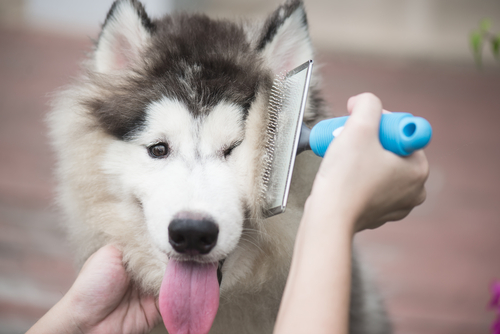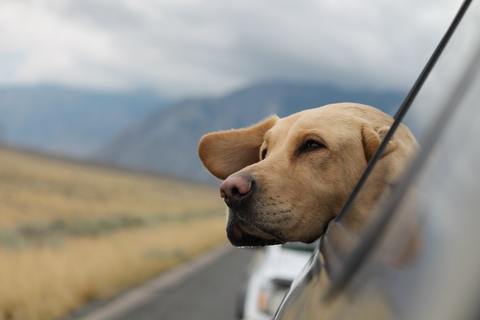Dog hair is everywhere—nestled in the cushions of your couch, piled in corners on the floor, clinging to the fabrics of your go-to black dress. If your pet is prone to shedding—or even worse, tangled mats in their fur—then you’ve probably considered a grooming regime to keep your pup’s coat clean-cut and healthy.
But what happens when you take out the brush and your pup goes running for the hills? Most likely, you’ll find yourself in a cat-and-mouse chase around the house to wrangle your nervous canine companion.
If you find yourself corralling your pooch during pamper time, here’s an in-depth guide on everything you need to know about how to brush a dog that hates being brushed, in addition to proper brushing techniques.
The Best Technique to Brush Your Dog
To make sure you’re providing your furry companion a comfortable experience, you must use a technique that keeps your dog calm and comfortable.
When working across the fur, never pull hard against mats or put too much pressure on the dog’s skin with the brush. Instead, imagine the way you might comb a kid’s hair and apply the same gentle touch to your dog.
For further assistance, here are some useful techniques on how you should apply the brush:1
- Go With the Flow – Avoid brushing against the natural flow of your dog’s hair. This may cause the brush to pull at their coat, which can cause discomfort. Brushing against the fur is only suitable for certain hair types, so make sure you’re always following the direction of fur growth unless advised otherwise.
- Treat The Fur with Care – Never try to pull too hard on snags—pulling too hard on your dog’s hair can cause damage and break the fur, and cause quite a bit of pain for your dog, too.
- Use Conditioner – If you find mats while brushing your dog’s hair, apply a mat-splitting solution like a conditioner or spray. Then use a mat-specific comb to work through the knot until their coat is silky and soft.
How to Brush Based on Your Dog’s Coat
No two dog coats are the same. The fur of each dog breed varies—from short and curly to long and wiry. When determining how to best brush your dog, first identify the type of coat your dog has:2
- Smooth (short) coat
- Curly or wooly coat
- Silky coat
- Double coat
- Wire coat
If you’re having trouble determining what kind of coat care your dog requires, reach out to your veterinarian for some pointers.
Techniques for Short, Smooth-coated Dogs
While dogs with short, smooth coats are often easier to bath and shampoo than the breeds with longer hair, you’ll find no shortage of shedding among this hair type. Dogs with short coats include breeds like:2
- Greyhounds
- Beagles
- Bulldogs
- Boston Terriers
- Pugs

For best results with this coat type, consider investing in a rubber brush or grooming mitt. The goal when grooming short hair dogs is to loosen shedding fur and dead skin. Loosen up the hair by grooming the dog in the opposite direction of the hair growth with the rubber brush, then follow with the grooming brush in the direction of growth to remove any loose hair or dirt.
Techniques for Curly or Wooly Fur
You might be familiar with the concept that some dog breeds have hair rather than fur—that’s the case with curly or wooly fur breeds. For these breeds, their single-layer coats are prone to minimal shedding, meaning their hair will continue to grow—and tangle if unchecked.3
Breeds with this coat type include:





